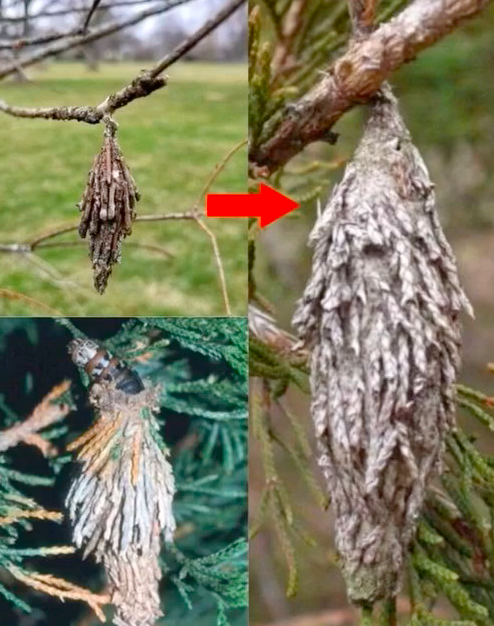If you’ve noticed your evergreen trees thinning out or dropping needles, the culprit might be the evergreen bagworm — a small moth larva that feeds on leaves and needles, often mistaken for a different kind of insect.
These tiny pests can put significant strain on trees, but catching the problem early and providing proper care can dramatically reduce the damage. Recognizing the warning signs is key to preventing long-term harm and maintaining a lush, healthy landscape all year long.
Bagworms are best known for the little, cone-shaped “bags” they create from silk, bits of leaves, and tiny twigs. These structures dangle from branches, perfectly camouflaging the larvae inside. Hidden away, the young caterpillars consume the tree’s foliage while blending seamlessly with their surroundings, often escaping notice until brown patches or thinned areas begin to appear.

In late spring, the eggs hatch, releasing small larvae that immediately start feeding. As summer progresses, they continue to grow until late summer, when they seal themselves inside their protective bags to pupate. Once mature, they transform into moths — males take flight in search of mates, while females remain attached to the host tree to lay eggs, continuing the life cycle for another season.
As the larvae feast on foliage, they remove the leaves and needles that evergreens rely on for photosynthesis — the process that fuels their growth and energy. Over time, this feeding weakens the trees, leaving them more vulnerable to drought stress, disease, and other environmental challenges. Fortunately, with attentive and consistent care, most affected trees can recover. Regular watering, proper pruning, and maintaining balanced soil health are essential steps in helping evergreens rebuild their strength and resilience.
When it comes to natural bagworm control, prevention is always the most effective approach. Make it a habit to inspect your trees each season and remove any visible bags before the larvae hatch. Promoting biodiversity in your garden — for instance, by planting a mix of species rather than large groups of the same type — can also help limit the spread of infestation.
Through careful observation and gentle, consistent maintenance, your evergreen trees can remain strong, vibrant, and beautiful for years to come — a living reminder that the best protection always begins with prevention.


